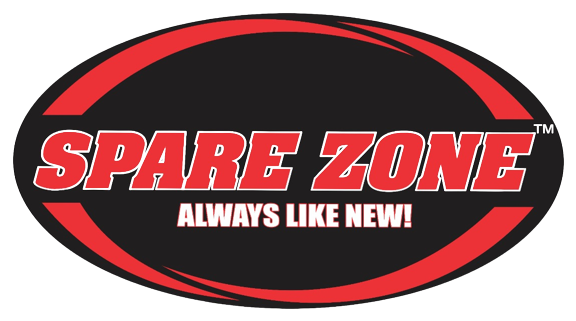Potential vehicle problems could include a punctured tyre, an overheated engine, a water pump problem or a more serious, mechanical failure.
Driving a well-maintained car doesn’t mean you won’t experience breakdowns and find yourself stranded on the side of the road.
There are a number of simple-yet-effective steps you can take to stay safe and get yourself back on the road.
At the first sign of trouble, decrease acceleration, indicate a lane change and carefully move your vehicle toward the breakdown lane or try to go off the road so as not to create a traffic jam. To maintain control, do not brake suddenly or steer abruptly. If you have a flat tyre, try to bring the car to rest on level ground, which will help when jacking up the car. If you are on an incline use a brick or stone behind the wheels to stop the vehicle from rolling or falling off the jack.
Make sure you can be seen. Place emergency triangles behind your vehicle to alert other drivers. Turn on your hazard lights or emergency indicators. If it is dark, turn on your car lights and the interior light as well.
If you have a flat tyre, make sure you can change it safely away from traffic. Otherwise, wait for police or other roadside emergency services to assist.
If you can’t fix the car yourself, wait for help. Raise the bonnet and wait for police or roadside emergency assistance.
Avoid walking along the road, especially in a quiet area or in bad weather. However, if you know where help can be found and can reach it quickly without posing a risk to your safety, do so. Walk on the side of the road, keeping as far away from moving traffic as possible.
Engine Overheating
If you see steam escaping from under the bonnet and/or the engine temperature needle in your car starts to rise, your vehicle is most likely overheating.
What to do: As you move your vehicle out of traffic, turn on the heater. This helps draw excess heat from the engine and cools it down.
Many vehicles have a secondary engine cooling fan that only operates with the A/C on high. If the temperature gauge needle won’t move off the red zone (or the temperature warning light stays on), find a safe place to pull over, turn off the engine, open the bonnet and wait for at least 30 minutes while the engine cools. Then move the vehicle to a safe place. Do not attempt to continue driving the vehicle; doing so can cause severe engine damage.
IMPORTANT: Never take the radiator cap off before the engine has cooled. The coolant inside is hot and under intense pressure and If opened the cap will release an explosion of scalding radiator fluid that can cause severe burns.
Tyres
Along with tyre tread and outer tyre wall inspection you should always check the inner tyre walls because this side is not easily visible. Even a new, properly inflated tyre can blow out. Debris, potholes and other road hazards can contribute to tyre failure as well as tyre age, worn tyres and over or under-inflated tyres.
How do you know when you have a tyre blowout? Telltale signs include a rhythmic thumping sound, sometimes accompanied by a tugging sensation through the steering wheel.
If you experience either, remove your foot from the accelerator, indicate a lane change, and then, while maintaining a firm grip on the steering wheel and taking care not to brake abruptly pull off the road to safety and turn on the hazard lights or emergency indicators. If possible, bring the car to rest on level ground, which will be helpful when jacking up the car and changing the tyre.
Failing Brakes
If you hit the brakes and nothing happens. The first thing to do is stay calm. A cool head will allow you to take steps to control your car.
Second, take your foot off the accelerator. Regardless of whether your car has a manual or automatic transmission, you can usually engine-brake the vehicle by downshifting to a lower gear. Once it starts to slow, continue down through the gears as your speed decreases while keeping the car under control and as far as possible from other vehicles.
If the road surface is dry and you have successfully slowed the vehicle to less than 30km/h, try using the hand brake to stop the vehicle.
Remember, this is a separate braking system and should still work although it is not nearly as powerful as your car’s regular brakes. Bring your car to a complete stop off the road if possible and turn on your hazard lights or emergency indicators. Have the car towed to a repair facility for inspection and repair.
Electronics failure
When you’re driving and start to experience no engine power, no power steering, no dashboard lights, no headlights, no indicators and your car starts to slow down, there may be an electrical failure.
What to do:
Roll down the window and use hand signals to indicate that you are changing lanes in order to pull over to the side of the road.
Avoid any jerky motions. Provided the lane is clear, grip the wheel and carefully steer the car toward the slow lane, using the remaining forward momentum.
Once safely in the breakdown lane, try to make sure you can be seen. Raise the bonnet. If possible, place triangles behind your vehicle to alert other drivers. Remember, without electrical power, your hazard lights will not operate. Don’t wait in your car if it is on the road – stand away from traffic on the side of the road. If your car is safely out of traffic, wait inside the vehicle with the doors locked.
Use your cell phone to call for help. If someone stops to help, remain in your locked car. Only open the window slightly and ask the person to call the police if you have not. It’s important not to compromise your safety. Someone may want to take advantage of your predicament.
Note:
Provided you are away from traffic, you will probably be safest staying in your vehicle until help arrives, unless you can quickly walk to a safe spot away from your vehicle and the road. Be careful about walking along the shoulder of the road. If you can, get as far off the roadway as possible.

